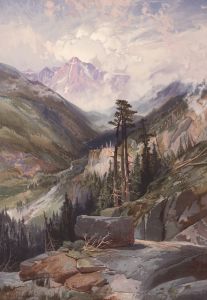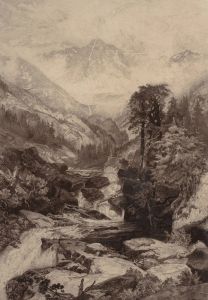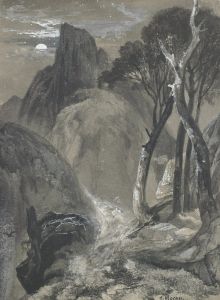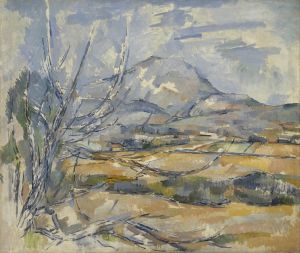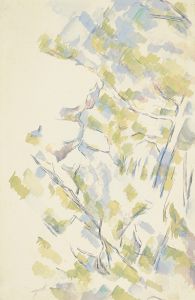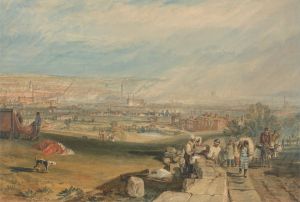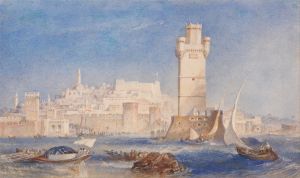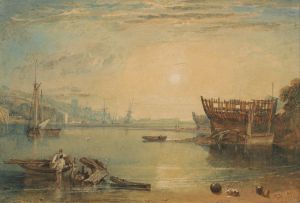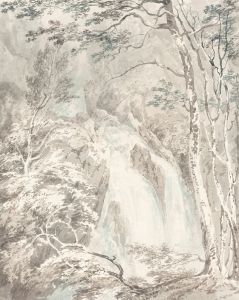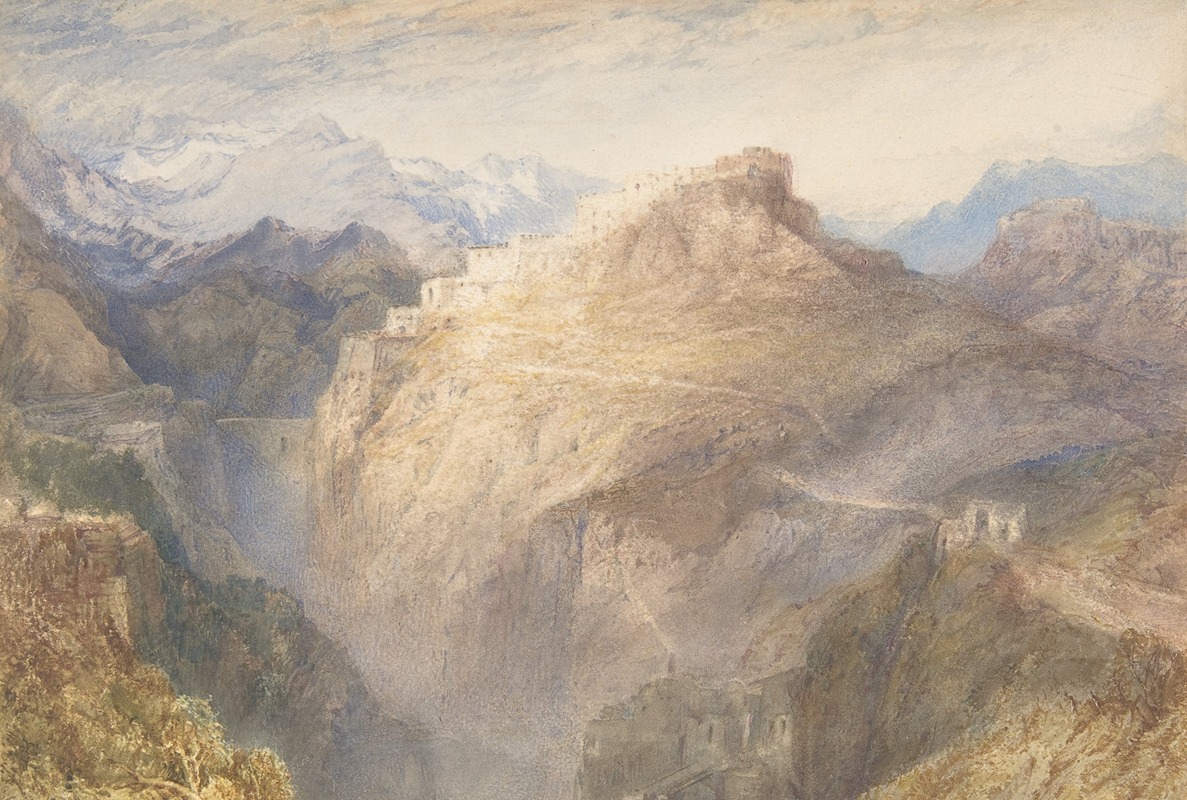
The Fort of L’Esseillon, Val de la Maurienne, France
A hand-painted replica of Joseph Mallord William Turner’s masterpiece The Fort of L’Esseillon, Val de la Maurienne, France, meticulously crafted by professional artists to capture the true essence of the original. Each piece is created with museum-quality canvas and rare mineral pigments, carefully painted by experienced artists with delicate brushstrokes and rich, layered colors to perfectly recreate the texture of the original artwork. Unlike machine-printed reproductions, this hand-painted version brings the painting to life, infused with the artist’s emotions and skill in every stroke. Whether for personal collection or home decoration, it instantly elevates the artistic atmosphere of any space.
Joseph Mallord William Turner, an eminent British artist known for his expressive colorization, imaginative landscapes, and turbulent marine paintings, created a piece titled "The Fort of L’Esseillon, Val de la Maurienne, France." This artwork is part of Turner’s extensive exploration of European landscapes, which he often captured during his travels across the continent. Turner’s works are renowned for their innovative use of light and color, which were groundbreaking at the time and contributed significantly to the development of Impressionism.
The Fort of L’Esseillon is located in the Maurienne Valley in the French Alps, a strategic location historically significant for its military fortifications. The fort was constructed in the early 19th century by the Kingdom of Sardinia as a defense against potential French invasions. This historical context provides a backdrop for Turner’s painting, which likely captures the fort amidst the dramatic Alpine scenery that characterizes the region.
Turner’s depiction of the fort would have been influenced by his interest in the sublime, a concept in art and philosophy that emphasizes the awe-inspiring and sometimes terrifying aspects of nature. His ability to convey the grandeur and power of natural landscapes is evident in many of his works, and it is reasonable to assume that "The Fort of L’Esseillon" reflects this interest. The painting likely features the fort set against the imposing backdrop of the Alps, with Turner’s characteristic use of light to highlight the interplay between the man-made structure and its natural surroundings.
Turner’s travels to the Alps were part of his broader European tours, which he undertook throughout his life. These journeys provided him with a wealth of material and inspiration, allowing him to capture a variety of landscapes and architectural subjects. His time in the Alps, in particular, left a lasting impression on his work, as seen in his numerous sketches and paintings of the region.
The painting of The Fort of L’Esseillon would have been created using Turner’s preferred medium of watercolor or oil, both of which he mastered to achieve his distinctive atmospheric effects. His technique often involved layering colors and using washes to create a sense of depth and luminosity, capturing the ephemeral qualities of light and weather.
While specific details about the painting "The Fort of L’Esseillon, Val de la Maurienne, France" by Turner may not be extensively documented, it fits within his broader oeuvre of works that explore the relationship between human structures and the natural world. Turner’s legacy as a pioneer of landscape painting is cemented by his ability to evoke emotion and convey the majesty of the scenes he depicted, making his works enduringly popular and influential in the history of art.






